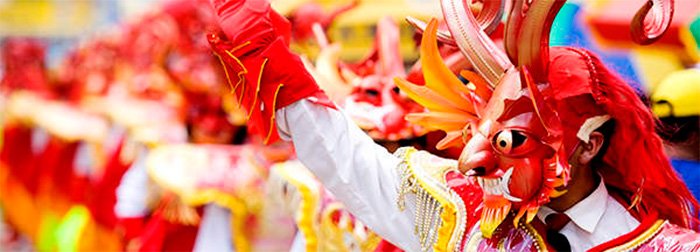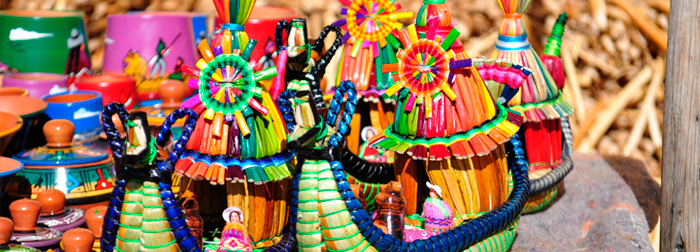Puno is situated between the shores of Lake Titicaca and the mountains surrounding the city. There is less than 2 miles of flat land between the shores and the foothills, which has caused the growing city to continue to expand upwards onto the hillsides. As a result, the town’s less developed and poorest areas, which are high on the hillsides, often have very steep streets, which are generally not paved and cannot be accessed by automobile.
Up one of these streets is the Kuntur Wasi viewpoint, which has a huge metal sculpture of a condor. There are some 700 steps to climb to reach the sculpture but the view across the city and Lake Titicaca beyond is breathtaking.
During the celebrations of the Feast of the “Virgen de la Candelaria” and the Regional Competition of Autochthonous Dances. Puno’s access to Lake Titicaca is surrounded by 41 floating islands. To this day, the Uros people maintain and live on these man-made islands, depending on the lake for their survival, and are a large tourist destination. Dragon Boat racing, an old tradition in Puno, is a very popular activity amongst tourists.
Puno is the first major hub in the constant migration of indigenous peoples of the Andes to the larger cities of Peru. It is the largest city in the Southern Altiplano and is the recipient of new residents from surrounding smaller agricultural communities of poorer class of people seeking better opportunities for education and employment. As such, Puno is served by several small Institutes of Technology, Education and other technical or junior college-type facilities. Additionally it is home to what is commonly referred to as the “UNA” or the Universidad Nacional del Altiplano, which was founded in 1856.
 As Puno is located at such a high elevation, it experiences more extreme weather conditions than would be expected for its tropical latitude. The average annual temperature is about 15 °C, and the weather never gets overly warm. During the winter months from June to August, night-time temperatures usually drop well below 0 °C. At this high altitude, the rays of the sun are very strong. Most of the annual precipitation occurs during the southern hemisphere summer, with the winter months being very dry.
As Puno is located at such a high elevation, it experiences more extreme weather conditions than would be expected for its tropical latitude. The average annual temperature is about 15 °C, and the weather never gets overly warm. During the winter months from June to August, night-time temperatures usually drop well below 0 °C. At this high altitude, the rays of the sun are very strong. Most of the annual precipitation occurs during the southern hemisphere summer, with the winter months being very dry.

Music and dance are typical parts of the Puno folklore. The most important dances are the Wifala de Asillo, the Ichu Carnival, the Tuntuna, the Khashua de Capachica, the Machu-tusuj, the Kcajelo, and the Pandilla Puneña.

Textiles and other products created from alpaca, llama, or sheep wool are characteristic of the area. They also make musical instruments like the siku (wind instrument) and the charango. The Toritos de Pucara are the most impressive ceramic pieces made.

